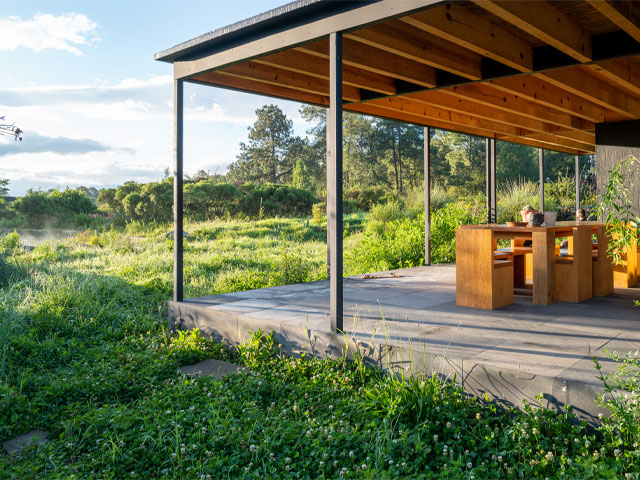Creating a water self-sufficient home on a Mexican nature reserve
This pioneering, drought-resilient project is a model for regenerative design
Architect Robert Hutchison of Robert Hutchison Architecture collaborated with his friend Javier Sanchez of JSA to create a family home that would be self-sufficient for water on a nature reserve 100 miles west of Mexico City. The project, which features an underground UV treatment plant to make rainwater drinkable, is a model for regenerative design and water self-sufficiency. Here, Robert shares his insights on the build.
How did the project begin?
Javier Sanchez, his wife Lorenia and their two daughters wanted to build a house on La Reserva el Peñón, a 450-acre nature reserve 100 miles west of Mexico City. Javier, who is one of Mexico’s best-known architects, is a friend of mine and he asked me to collaborate on the design. Though we have different areas of expertise we share similar interests and influences and have enjoyed teaching and working together in the past. My firm contributed our knowledge of building with wood, which is rarely used for construction in Mexico.

Photo: Robert Hutchison
Tell us about the site
Summers are very wet and winters are extremely dry so the reserve’s 80 private plots are being developed along pioneering drought-resilient lines. Water gathers in reservoirs connected via a network of hedges and ditches that channel the surface run-off as it travels down the slope. Each house must contribute by collecting and storing the rainwater that falls on its roof and can take any extra from the communal reservoirs. The whole water self-sufficiency system holds almost 30 million gallons to sustain the residents through the dry months.

Photo: Robert Hutchison
How did it progress?
First we designed a separate bathhouse and a standalone studio for guests. Along with the house, they have flat green roofs for water harvesting. Javier wanted his home to act as a laboratory for experimenting with water use, so we also dug a private reservoir and added solar panels to make it completely off-grid.

Photo: Robert Hutchison
And the water self-sufficiency system?
An underground UV treatment plant makes the rainwater drinkable. Another chemical-free system turns sewage into grey water to flush the toilets and to supply the vegetable garden and the orchard.

Photo: Robert Hutchison
What have you learned?
The project is a model for regenerative design and could be replicated to avoid relying on water pumped from far away. It could even be used in a city by dedicating neighbourhood areas to collecting, treating and storing rainwater for local use. As temperatures rise and populations increase, water self-sufficiency and treating water as a precious resource is more important than ever.









